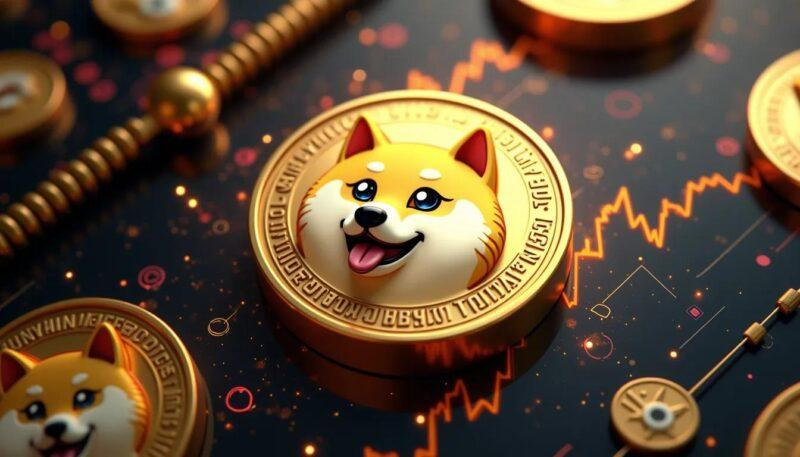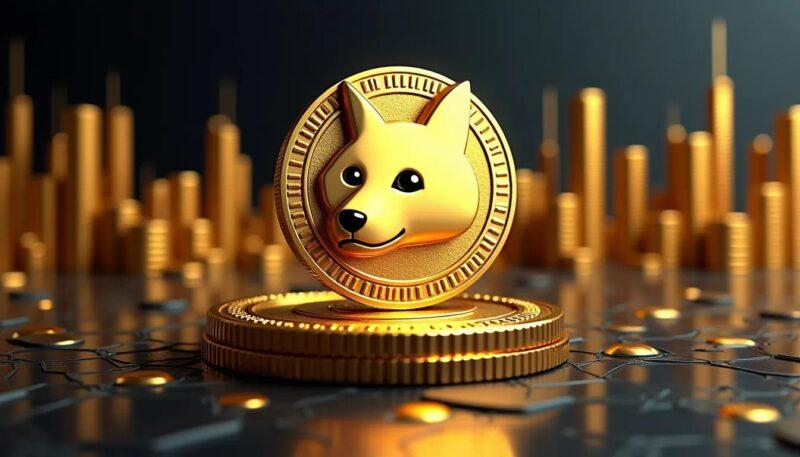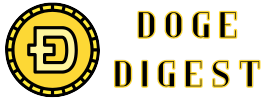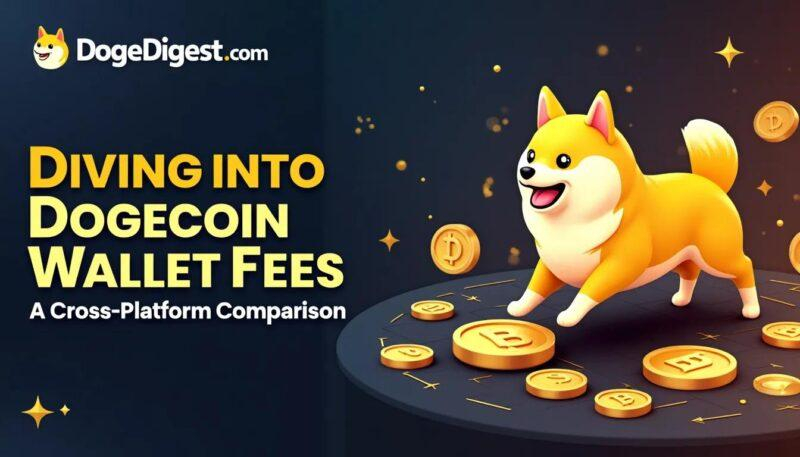In the vibrant and often unpredictable world of cryptocurrency, Dogecoin has carved out a unique niche – part meme, part serious digital asset, and wholly beloved by a passionate community. As interest in this playful coin continues to grow, so too does the importance of protecting your Dogecoin investments from digital threats. Just as you wouldn’t leave a treasure chest unlocked, securing your Dogecoin wallet requires thoughtful strategies and vigilance. This article explores essential tips to help you safeguard your Dogecoin, ensuring your crypto remains as safe as it is fun to own.
Choosing the Right Wallet for Your Dogecoin
When it comes to managing your Dogecoin, the choice of wallet isn’t just about convenience-it’s a vital step in protecting your investment. Wallets come in various forms, ranging from highly secure hardware options to user-friendly mobile apps. Your selection should align with your priorities, whether that’s advanced security features or seamless access for everyday transactions. Understanding the trade-offs helps you make an informed decision tailored to your needs.
Hardware wallets like Ledger and Trezor are ideal for those focused on maximum security. These physical devices store your private keys offline, minimizing exposure to hacks and malware. On the other hand, software wallets, including desktop and mobile apps, offer greater flexibility and speed but require careful handling to avoid phishing scams or vulnerabilities in your device’s security setup.
Here’s a quick guide to help evaluate wallet types based on key factors:
| Wallet Type | Security Level | Ease of Use | Best For |
|---|---|---|---|
| Hardware Wallet | High | Moderate | Long-term storage |
| Desktop Wallet | Medium | High | Active trading |
| Mobile Wallet | Medium-Low | Very High | Daily spending |
| Web Wallet | Low | Very High | Quick access, small amounts |
- Compatibility: Ensure the wallet supports Dogecoin specifically, as not all wallets cover every cryptocurrency.
- Backup options: Look for wallets that offer seed phrases or private key exports for recovery.
- Community reviews: Active developer support and user feedback can signal reliability.
Creating Strong and Unique Passwords to Protect Your Assets
In the world of digital currencies, a strong password acts as the first, indispensable line of defense. Crafting a password that is both strong and unique requires more than just picking random words. Combining uppercase letters, numbers, symbols, and lowercase characters creates a complex barrier against potential cyber threats. Avoid common patterns or predictable sequences such as “12345” or “password,” as these are easily cracked by automated hacking tools.
To maintain the uniqueness of your password across multiple platforms, consider using a trusted password manager. These tools not only generate difficult-to-guess passwords but also safely store them, so you don’t need to memorize every detail. Remember, reusing the same password for multiple wallets or accounts is a high-risk strategy that undermines your asset security.
Keep in mind some best practices for password creation:
- Use at least 12 characters combining letters, numbers, and symbols
- Include uncommon phrases or a mixture of unrelated words
- Change your passwords periodically, especially if you suspect a data breach
- Enable two-factor authentication alongside your strong password
| Password Element | Recommended Use |
|---|---|
| Uppercase Letters | At least 1-2 per password |
| Numbers | Include 2 or more for complexity |
| Symbols | Use special characters like !, $, #, % |
| Length | Minimum 12 characters recommended |
Enabling Two-Factor Authentication for Enhanced Security
Adding an extra layer of protection to your Dogecoin wallet significantly reduces the risk of unauthorized access. By integrating two-factor authentication (2FA), even if someone manages to obtain your password, they’ll still need a second verification step to break in. This simple yet powerful security measure requires users to confirm their identity using something they have-typically a smartphone app or a physical token-ensuring your assets remain locked tight.
Implementing 2FA is surprisingly straightforward and compatible with most wallet platforms. Popular apps like Google Authenticator, Authy, and Microsoft Authenticator generate time-sensitive codes that refresh every 30 seconds, making unauthorized code reuse impossible. Enabling 2FA usually involves scanning a QR code within the wallet settings, followed by entering a generated code for confirmation. Remember, this small investment of setup time can prevent catastrophic losses.
To help you navigate the options, here’s a quick comparison of common 2FA methods and their convenience versus security balance:
| Method | Security Level | Ease of Use | Backup Options |
|---|---|---|---|
| Authenticator Apps | High | Moderate | Cloud Sync / Export Codes |
| SMS Codes | Moderate | Easy | Phone Number Recovery |
| Hardware Tokens (e.g., YubiKey) | Very High | Moderate | Spare Device Recommended |
Safely Backing Up Your Wallet and Recovery Phrases
When it comes to protecting your Dogecoin, backing up your wallet and recovery phrases isn’t just a precaution-it’s an absolute necessity. Storing these crucial pieces of information securely ensures you can regain access to your funds even if your device is lost, damaged, or compromised. Start by writing down your recovery phrases on physical paper rather than saving them digitally. Physical backups are immune to hacking attempts and malware, making them a rock-solid defense against cyber threats.
To further enhance security, consider creating multiple backups stored in separate, secure locations. A fireproof and waterproof safe at home, a safety deposit box at your bank, or even entrusted with a highly trusted family member are excellent options. Avoid places prone to theft, floods, or accidental disposal. Using durable materials like metal backup plates can safeguard recovery phrases against physical deterioration over time-a smart upgrade from traditional paper backups.
Here’s a quick checklist for effective wallet and recovery phrase backups:
- Write down recovery phrases neatly and in order.
- Don’t store backup copies digitally (no screenshots or cloud storage).
- Use fireproof, waterproof storage containers.
- Create at least two independent backups.
- Update backups when changing wallets or security settings.
| Backup Method | Pros | Cons |
|---|---|---|
| Paper Backup | Easy to create, offline, low tech | Vulnerable to fire and water damage |
| Metal Backup Plate | Durable, fireproof, waterproof | Costly, requires tools to engrave |
| Safety Deposit Box | Highly secure, offsite | Access may be delayed, potential fees |
Recognizing and Avoiding Common Scams Targeting Dogecoin Holders
Dogecoin’s popularity has unfortunately made it a magnet for scammers using increasingly sophisticated tactics. Common ploys include fake giveaways promising free Dogecoin if you send a small amount first, impersonation of well-known influencers or platforms, and phishing links designed to harvest your wallet credentials. Staying alert to unsolicited messages and offers that seem too good to be true is essential. Always verify the source before clicking any link or sharing personal information.
Phishing remains one of the most prevalent threats to Dogecoin holders. Fraudsters create fake websites that closely mimic legitimate exchanges or wallet services. These sites trick users into entering private keys or seed phrases, leading to irreversible loss of funds. A quick check of the URL, looking for SSL certificates, and bookmarking official sites can save you from falling victim. Never share your recovery phrases or private keys – even if asked under the guise of “support.”
Below is a quick reference table highlighting typical scam types and red flags to watch for:
| Scam Type | Warning Signs | How to Protect Yourself |
|---|---|---|
| Fake Giveaways | Requests for upfront payment, urgent deadlines | Ignore unsolicited offers; verify with official channels |
| Phishing Sites | Suspicious URLs, poor website design, unexpected pop-ups | Use bookmarks and enable two-factor authentication |
| Impersonation | Unverified social media profiles, inconsistent messaging | Confirm identities via multiple sources; do not share sensitive info |
Q&A
Q&A: Safeguarding Your Dogecoin – Top Tips for Wallet Security
Q1: Why is wallet security important for Dogecoin holders?
A1: Just like you wouldn’t leave your cash lying around, your Dogecoin needs protection too. Wallet security ensures that your coins are safe from hackers, scams, and accidental loss. Without proper safeguards, you risk losing your digital treasure forever.
Q2: What types of wallets are safest for storing Dogecoin?
A2: There are several options, but hardware wallets stand out as the champions of security. These physical devices store your private keys offline, making them immune to online hacks. Software wallets are convenient but more vulnerable, so it’s wise to combine them with strong security practices. Paper wallets can be secure too if generated properly and kept safe from physical damage or theft.
Q3: How can I create a strong password for my Dogecoin wallet?
A3: Think of your password as a secret spell-make it long, complex, and unforgettable only to you. Use a mix of uppercase and lowercase letters, numbers, and special characters. Avoid obvious choices like birthdays or pet names. Consider using a trusted password manager to keep track without sacrificing security.
Q4: What is two-factor authentication (2FA), and should I use it?
A4: Two-factor authentication is an extra lock on your digital door. It requires you to provide two separate proofs of identity-usually your password plus a temporary code from your phone or an app. Enabling 2FA adds a crucial layer of defense against unauthorized access, so yes, always use it where possible.
Q5: Are public Wi-Fi networks safe for managing Dogecoin wallets?
A5: Public Wi-Fi is like a crowded marketplace-easy for thieves to eavesdrop. Avoid accessing your Dogecoin wallet on unsecured networks. If you must, use a reliable VPN to encrypt your connection and shield your data from prying eyes.
Q6: What should I know about backing up my Dogecoin wallet?
A6: Backups are your safety net. Regularly save a copy of your wallet’s private keys or seed phrases in multiple secure locations. This way, if your device is lost, stolen, or damaged, you can still recover your Dogecoin. Never store backups digitally without encryption, or you risk exposing them to hackers.
Q7: How can I recognize scams targeting Dogecoin users?
A7: Scammers love to prey on crypto enthusiasts with promises of quick riches or urgent requests for private information. Be wary of unsolicited messages, phishing websites, and too-good-to-be-true offers. Remember: Nobody legitimate will ever ask for your private keys or seed phrases.
Q8: Is it safe to share my Dogecoin wallet address with others?
A8: Yes! Your wallet address is like your email-it’s safe to share when receiving Dogecoin. However, never share your private keys or recovery phrases. Those are the keys to your kingdom, and should remain secret.
Q9: What’s the best mindset for ongoing Dogecoin wallet security?
A9: Think of wallet security as a journey, not a one-time setup. Stay informed about new threats, routinely update your wallets and devices, and maintain healthy skepticism. Vigilance and good habits keep your Dogecoin safe, so you can enjoy the ride without worry.
Q10: Where can I learn more about keeping my Dogecoin safe?
A10: Trusted crypto communities, official wallet websites, and cybersecurity resources are great places to start. Always prioritize information from reputable sources and never stop learning-knowledge is your best defense in the dynamic world of cryptocurrency security.
The Way Forward
As the digital landscape continues to evolve, so too does the importance of protecting your Dogecoin holdings from the unseen risks lurking online. By implementing thoughtful wallet security practices-whether through strong passwords, reliable hardware wallets, or vigilant account monitoring-you’re not just safeguarding your coins; you’re investing in peace of mind. Remember, in the world of cryptocurrency, the best defense is a proactive offense. Keep your Dogecoin secure, stay informed, and let your digital journey be one of confidence and careful stewardship.






